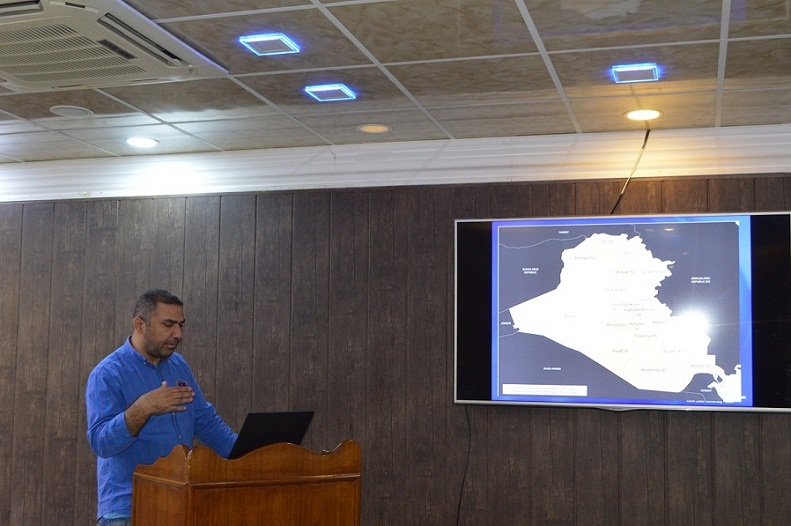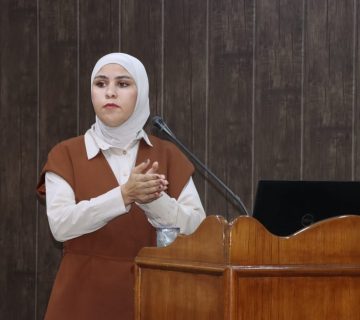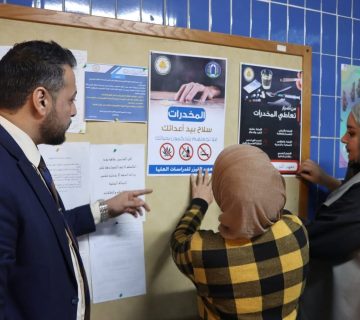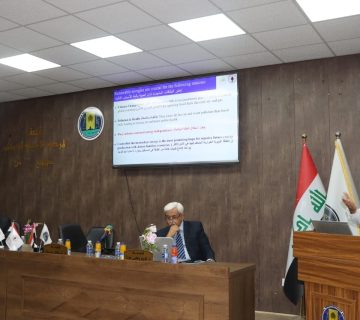Under the auspices of the respected Dean of the Laser Institute for Graduate Studies, Professor Dr. Hussein Ali Jawad,
The Medical and Biological Applications Branch held a workshop at the Institute of laser for Postgraduate Studies on Sunday, March 13, 2023.
The workshop is entitled (hemorrhagic fever)
The aim of the workshop was to educate the community about hemorrhagic fever, its causes and how to prevent it.
The session was moderated by Prof. Dr. Laila Mohamed Hassan, Head of the Medical and Biological Applications Branch. It included two lectures; the first lecture was given by Dr. Mina Ahmed Abdel Muttalib
Summed up
“hemorrhagic fever”: It is a type of virus that causes disruption of blood clotting and affects RNA that has a lipid envelope. Its main vector is {wild or domestic animals, ticks, and insects} and it consists of five groups (-rapdoviridi-buniaviridi- filaviridi-flaviviridi- arinaviridi)
Hemorrhagic fever causes death if the bleeding is not controlled. An incubation period begins without symptoms, then severe fatigue, fever, and pain in the body and muscles follow, then the stage of bleeding from the nose, mouth, and subcutaneous bleeding begins, which lasts for several days and causes death if it is not treated or affects other organs.
Prevention is done by following safety instructions, avoiding mixing with infected animals or patients, sterilizing with hypochlorite, throwing away contaminated tools, and isolating the infected patient.
Treatment is done: – Replacement with blood, saline solution, platelets, and treatment with ribavirin for specific types of it
No vaccine has yet been found to prevent it, only for yellow fever.
It is detected by conducting a PCR examination, immunological examinations, and a blood serum examination in which liver enzymes and urea are high.
Also, an analysis of the blood image has been done, which shows a low number of white blood cells, lymphocytes, and platelet count.
As for the second lecture, it was delivered by the teacher, Muhammad Ghaleb Razzouqi
The lecture is dealt with viral hemorrhagic fevers (VHFs), which are a group of infectious diseases that affect many body systems at the same time, and affect the body’s ability to regulate itself. It may also cause damage to blood vessels and an imbalance in the blood clotting process.
Causes of hemorrhagic fever:
Arenaviruses: These include the Lassa virus, the Machupo virus, and the Junin virus.
Filoviruses: These include the Ebola virus and the Marburg virus.
Bunyaviruses: These include the Rift Valley Fever Virus and the Crimean-Congo Hemorrhagic Fever Virus.
Flaviviruses: These include the yellow fever virus and the dengue fever virus.
Modes of transmission of hemorrhagic fever:
The viruses that are the primary causes of hemorrhagic fevers can be transmitted to humans upon contact with animal hosts infected with viruses or arthropod vectors. Here are the possible modes of transmission:
Hemorrhagic fever viruses can be transmitted between animal or arthropod hosts.
Hemorrhagic fever viruses can be transmitted to humans when they come into contact with the urine, feces, saliva, blood, or other body fluids and secretions of infected animals and arthropods.
Humans can become infected through the bites of infected insects, such as mosquitoes and ticks.
Viruses can spread in animals and livestock, and thus, the possibility of transmission to humans when eating an infected animal or during its slaughter.
Some hemorrhagic fever viruses can be transmitted from one person to another once the primary person has been infected. This type of secondary transmission of the virus can occur directly through close contact with the infected person and contact with one of their own body fluids. It can also occur indirectly through contact with contaminated tools, such as needles and syringes.
Symptoms of hemorrhagic fever:
High fever – headache – fatigue – abdominal pain – muscle pain – vomiting – bloody diarrhea – hemorrhage under the skin – rash – coma – delirium.
Diagnosis:
Clotting time, PCR, Serology, complete blood count, blood picture, and liver function treatment
Supportive fluids – medicines and supportive therapies – dialysis protection
Prevention of rodents – prevention of insect bites – prevention of infected people – wearing gloves and masks – wearing glasses – sterilizing surfaces.












